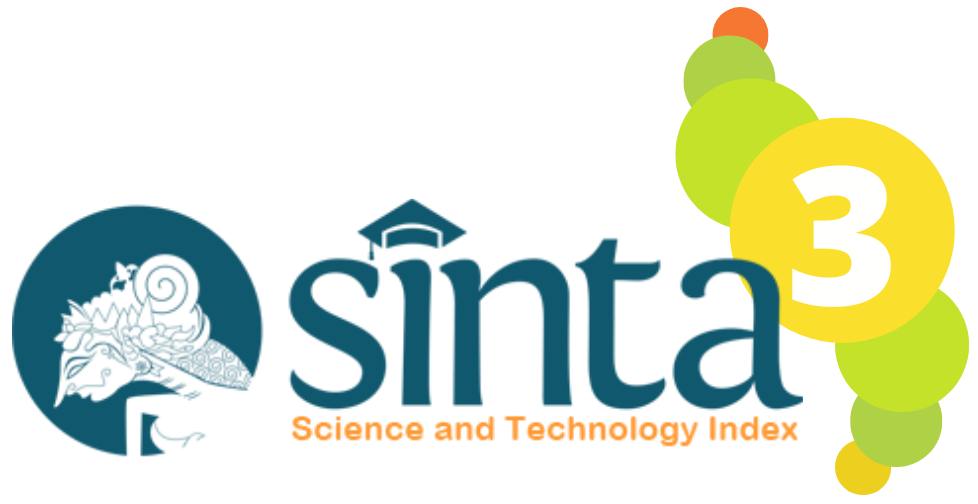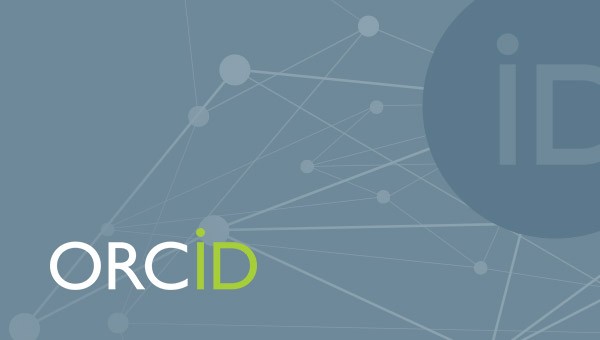Evaluating Student-Built Earthquake Alarm Prototypes: Integrating Engineering Practices Through Real-World Projects in Junior High School
DOI:
10.29303/jpft.v11i1a.9306Published:
2025-08-15Issue:
Vol. 11 No. 1a (2025): Special IssueKeywords:
PGBU, Earthquake, Engineering Practices, Creativity, CollaborationArticles
Downloads
How to Cite
Downloads
Metrics
Abstract
Preparing students for 21st-century challenges requires learning experiences that connect scientific knowledge with real-world applications. This study investigates the integration of engineering practices in junior high school physics education through a project in which ninth-grade students designed and built simple earthquake alarm prototypes. The project adopted the PGBU (Pikir, Gambar, Buat, Uji)—a structured design process widely used in Indonesia—to guide students through iterative phases of thinking, sketching, building, and testing. Data from 24 student groups were analyzed using a rubric assessing functionality, application of physics concepts, creativity, construction neatness, and use of recycled materials. Most groups performed at moderate to high levels, with relatively higher performance observed in creativity and functionality. Results also indicated evidence of collaboration and the ability to apply physics concepts in real-world contexts. The project-based implementation of PGBU effectively fostered essential 21st-century competencies such as creative problem-solving, critical thinking, and teamwork. These findings highlight the potential of culturally grounded, design-based learning to support meaningful STEM education in junior high schools.
References
Adeoye, M. A., & Jimoh, H. A. (2023). Problem-Solving Skills Among 21st-Century Learners Toward Creativity and Innovation Ideas. Thinking Skills and Creativity Journal, 6(1), 52–58. https://doi.org/10.23887/tscj.v6i1.62708 DOI: https://doi.org/10.23887/tscj.v6i1.62708
Al-Kamzari, F., & Alias, N. (2025). A systematic literature review of project-based learning in secondary school physics: theoretical foundations, design principles, and implementation strategies. In Humanities and Social Sciences Communications (Vol. 12, Issue 1). Springer Nature. https://doi.org/10.1057/s41599-025-04579-4 DOI: https://doi.org/10.1057/s41599-025-04579-4
Ayida, L. P., Abdurrahman, A., Wicaksono, B. A., & Herlina, K. (2025). Implementation of the 5E Model Integrated STEM-EDP to Enhance High School Students’ Creative Problem-Solving Ability. Jurnal Pendidikan Fisika Dan Teknologi, 11(1), 171–179. https://doi.org/10.29303/jpft.v11i1.8717 DOI: https://doi.org/10.29303/jpft.v11i1.8717
Belbase, S., Mainali, B. R., Kasemsukpipat, W., Tairab, H., Gochoo, M., & Jarrah, A. (2022). At the dawn of science, technology, engineering, arts, and mathematics (STEAM) education: prospects, priorities, processes, and problems. International Journal of Mathematical Education in Science and Technology, 53(11), 2919–2955. https://doi.org/10.1080/0020739X.2021.1922943 DOI: https://doi.org/10.1080/0020739X.2021.1922943
Capraro, R. Michael., Capraro, M. Margaret., & Morgan, J. R. . (2013). STEM project-based learning : an integrated science, technology, engineering, and mathematics (STEM) approach. SensePublishers. DOI: https://doi.org/10.1007/978-94-6209-143-6
Chandra, D. T. (2013). Pengembangan dan implementasi pendidikan teknologi pada pendidikan dasar di indonesia.
Chandra, D. T. (2022). Teknologi Rekayasa dalam Pembelajaran Fisika. In Prosiding Seminar Nasional Fisika (Vol. 1, Issue 1).
Chandra, D. T., Fisika, J. P., & Upi, F. (2010). Kajian Efektivitas Pembelajaran Fisika Dalam Meningkatkan Technological Literacy Dan Kreativitas Siswa SMP Melalui Implementasi Program Pendidikan Teknologi Dasar (PTD) (Vol. 13, Issue 2).
Chang C-C and Chen Y-K (2022) Educational values and challenges of i-STEM project-based learning: A mixed-methods study with data-transformation design. Front. Psychol. 13:976724. doi: 10.3389/fpsyg.2022.976724 DOI: https://doi.org/10.3389/fpsyg.2022.976724
Diana, N., Yohannes, & Sukma, Y. (2021). The effectiveness of implementing project-based learning (PjBL) model in STEM education: A literature review. Journal of Physics: Conference Series, 1882(1). https://doi.org/10.1088/1742-6596/1882/1/012146 DOI: https://doi.org/10.1088/1742-6596/1882/1/012146
Jannah, A. M., Yennita, & Azizahwati. (2025). Efforts to Improve Creative Thinking Skills and Communication Skills Through the Application of Project Based Learning Models. Jurnal Penelitian Pendidikan IPA, 11(3), 380–384. https://doi.org/10.29303/jppipa.v11i3.10316 DOI: https://doi.org/10.29303/jppipa.v11i3.10316
Khan, S., Development, R., & Ahmad, U. (2025). The Impact of Project-Based Learning on Student Creativity, Critical Thinking, And Problem-Solving Skills. In Contemporary Journal of Social Science Review (Vol. 03, Issue 01).
Khoirunnissa, R., Suwarma, I. R., & Muslim, M. (2024). The Implementation of STEM-PBL Learning to Enhance Students’ Critical Thinking Skills. Jurnal Pendidikan Fisika Dan Teknologi, 10(1), 175–185. https://doi.org/10.29303/jpft.v10i1.6879 DOI: https://doi.org/10.29303/jpft.v10i1.6879
Lin, K. Y., Wu, Y. T., Hsu, Y. T., & Williams, P. J. (2021). Effects of infusing the engineering design process into STEM project-based learning to develop preservice technology teachers’ engineering design thinking. International Journal of STEM Education, 8(1). https://doi.org/10.1186/s40594-020-00258-9 DOI: https://doi.org/10.1186/s40594-020-00258-9
Oliveira, A., Feyzi Behnagh, R., Ni, L., Mohsinah, A. A., Burgess, K. J., & Guo, L. (2019). Emerging technologies as pedagogical tools for teaching and learning science: A literature review. Human Behavior and Emerging Technologies, 1(2), 149–160. https://doi.org/10.1002/hbe2.141 DOI: https://doi.org/10.1002/hbe2.141
Pepin, B., Biehler, R., & Gueudet, G. (2021). Mathematics in Engineering Education: a Review of the Recent Literature with a View towards Innovative Practices. International Journal of Research in Undergraduate Mathematics Education, 7(2), 163–188. https://doi.org/10.1007/s40753-021-00139-8 DOI: https://doi.org/10.1007/s40753-021-00139-8
Purnama, A., Winarno, N., Cahya Prima, E., & Ahmad, J. (2023). Fostering Students’ Concept Mastery through STEM-Engineering Design Process in Thermal Energy and Heat Transfer Topic. INSECTA: Integrative Science Education and Teaching Activity Journal. 4(2), 209-230. https://jurnal.iainponorogo.ac.id/index.php/insecta/article/view/7240 DOI: https://doi.org/10.21154/insecta.v4i2.7240
Probowati, D., Sri Iswari, R., & Sukaesih, S. (2020). The Influence of Project Based Creative Problem Solving Toward Creative Thinking Ability on Circulation System. Journal of Biology Education, 9(2), 167–177. http://journal.unnes.ac.id/sju/index.php/ujbe
Rachmayati, D. A., Kaniawati, I., & Hernani, H. (2020). Enhancing concept mastery of students through STEM-project in scientific inquiry learning. Journal of Physics: Conference Series, 1469(1). https://doi.org/10.1088/1742-6596/1469/1/012149 DOI: https://doi.org/10.1088/1742-6596/1469/1/012149
Safitri, W., Suyanto, S., & Prasetya, W. A. (2024). The Influence of the STEM-Based Engineering Design Process Model on High School Students’ Creative and Critical Thinking Abilities. Jurnal Penelitian Pendidikan IPA, 10(2), 662–673. https://doi.org/10.29303/jppipa.v10i2.4765 DOI: https://doi.org/10.29303/jppipa.v10i2.4765
Sucilestari, R., Ramdani, A., Sukarso, A., Susilawati, S., & Rokhmat, J. (2023). Project-Based Learning Supports Students’ Creative Thinking in Science Education. Jurnal Penelitian Pendidikan IPA, 9(11), 1038–1044. https://doi.org/10.29303/jppipa.v9i11.5054 DOI: https://doi.org/10.29303/jppipa.v9i11.5054
Sukackė, V., Guerra, A. O. P. d. C., Ellinger, D., Carlos, V., Petronienė, S., Gaižiūnienė, L., Blanch, S., Marbà-Tallada, A., & Brose, A. (2022). Towards Active Evidence-Based Learning in Engineering Education: A Systematic Literature Review of PBL, PjBL, and CBL. Sustainability, 14(21), 13955. https://doi.org/10.3390/su142113955 DOI: https://doi.org/10.3390/su142113955
Thorne, S. (2017). Interpretive Description: Qualitative Research for Applied Practice.
Vale, I., Barbosa, A., Peixoto, A., & Fernandes, F. (2022). Solving Problems through Engineering Design: An Exploratory Study with Pre-Service Teachers. Education Sciences, 12(12). https://doi.org/10.3390/educsci12120889 DOI: https://doi.org/10.3390/educsci12120889
Wulandari, N. O., Sutrio, Doyan, A., & Rahayau, S. (2024). The Influence of Project Based Learning Model on Creative Thinking Skills and Physics Learning Outcomes. Jurnal Penelitian Pendidikan IPA, 10(12), 10660–10669. https://doi.org/10.29303/jppipa.v10i12.9738 DOI: https://doi.org/10.29303/jppipa.v10i12.9738
Yanti, N., Rahmad, M., & Azhar. (2023). Application of PjBL (Project Based Learning) Based Physics Learning Model to Improve Collaboration Skills and Creative Thinking Ability of Students. Jurnal Penelitian Pendidikan IPA, 9(11), 9973–9978. https://doi.org/10.29303/jppipa.v9i11.5275 DOI: https://doi.org/10.29303/jppipa.v9i11.5275
Author Biographies
Iin Suminar, Universitas Pendidikan Indonesia
Physics Education Study Program
M. Reza Dwi Saputra, Universitas Pendidikan Indonesia
Physics Education Study Program
Nur Habib Muhammad Iqbal, Universitas Pendidikan Indonesia
Physics Education Study Program
License
Copyright (c) 2025 Iin Suminar, M. Reza Dwi Saputra, Nur Habib Muhammad Iqbal

This work is licensed under a Creative Commons Attribution-ShareAlike 4.0 International License.
Authors who publish with Jurnal Pendidikan Fisika dan Teknologi (JPFT) agree to the following terms:
- Authors retain copyright and grant the journal right of first publication with the work simultaneously licensed under a Creative Commons Attribution License 4.0 International License (CC-BY-SA License). This license allows authors to use all articles, data sets, graphics, and appendices in data mining applications, search engines, web sites, blogs, and other platforms by providing an appropriate reference. The journal allows the author(s) to hold the copyright without restrictions and will retain publishing rights without restrictions.
- Authors are able to enter into separate, additional contractual arrangements for the non-exclusive distribution of the journal's published version of the work (e.g., post it to an institutional repository or publish it in a book), with an acknowledgement of its initial publication in Jurnal Pendidikan Fisika dan Teknologi (JPFT).
- Authors are permitted and encouraged to post their work online (e.g., in institutional repositories or on their website) prior to and during the submission process, as it can lead to productive exchanges, as well as earlier and greater citation of published work (See The Effect of Open Access).










